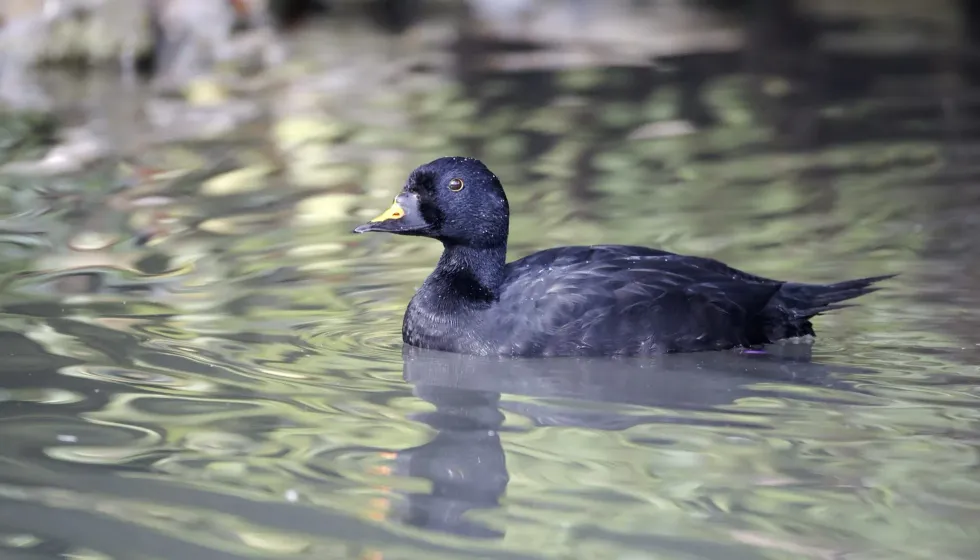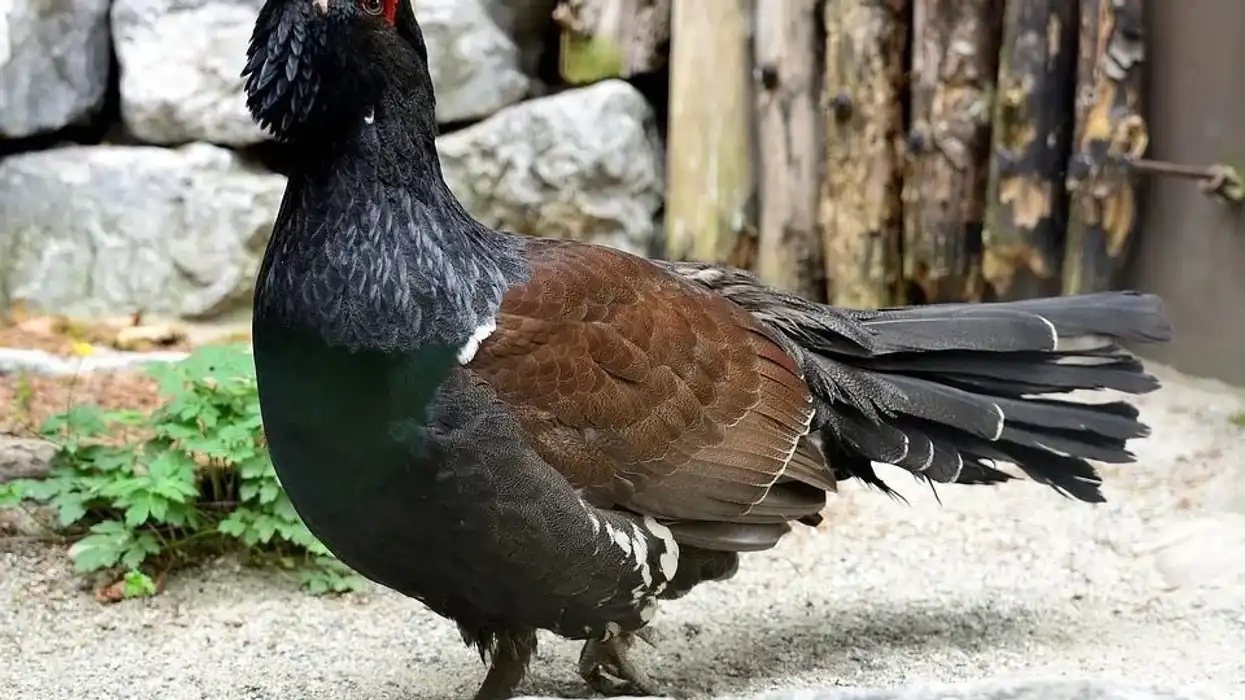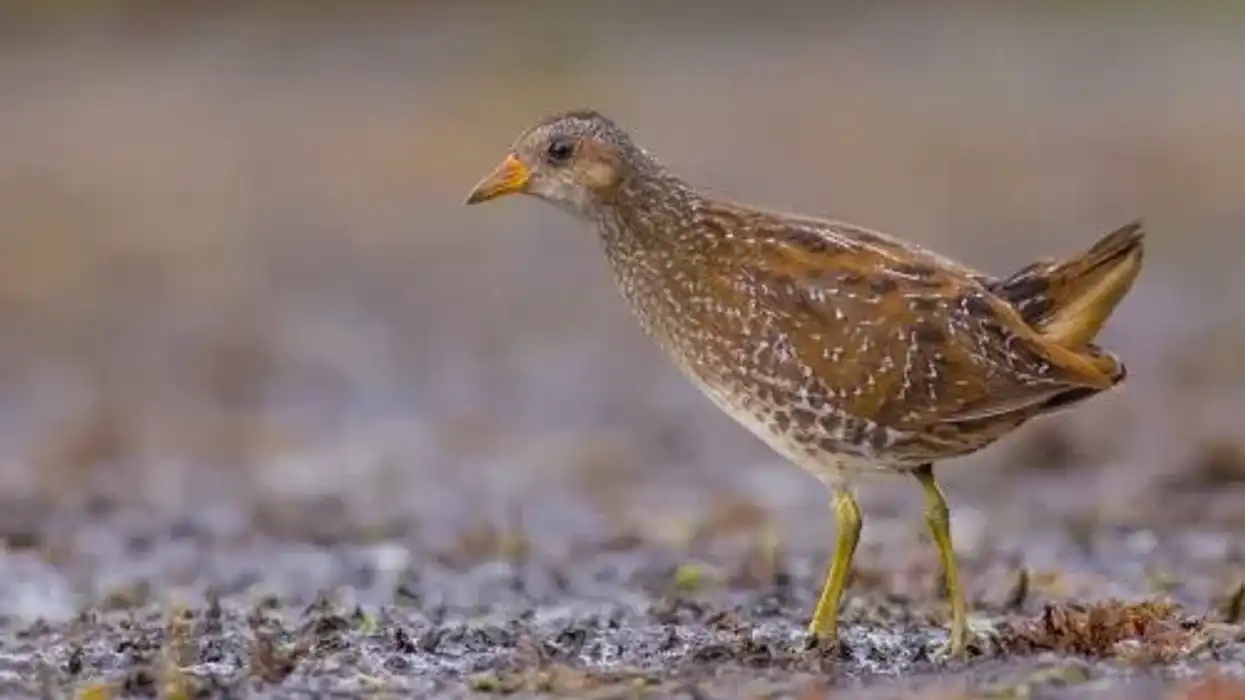The common scoter (Melanitta nigra) is a popular seaduck. This bird is found mostly in Europe, however, you can see them wintering in parts of Asia as well. Though they enjoy sea waters, though they move over to freshwater habitats during migration.
Males are entirely black, whereas females have brown bodies. They have black beaks with a bright yellow base. They mostly feed on mollusks, crustaceans, fish, marine invertebrates and plant matter. By the age of 2 years, they are all set for breeding, and form pairs after rigorous search for the right mate.
For more relatable content, check out these blue jay facts and calliope hummingbird facts for kids.
Common Scoter Interesting Facts
What type of animal is a common scoter?
The common scoter is a type of seaduck.
What class of animal does a common scoter belong to?
The common scoter (Melanitta nigra) belongs to the class Aves.
How many common scoters are there in the world?
An estimate of about 1,600,000 individuals of this duck species has been recorded.
Where does a common scoter live?
The common scoter is known to breed in regions of northern Europe, and even the Palearctic areas to the Russian Olenyok River.
Main locations of breeding include the British Isles, Iceland, Norway, Siberia, and Russia. Their range covers the lower Khantanga drainage, all the way south to Russia’s Kamchatka Peninsula.
These birds spend the winter months a little to the south, in the Baltic Sea, and near northern Norway lands. Surprisingly, they have also been seen wintering in eastern China, Korea, and Japan.
What is a common scoter's habitat?
The common scoter prefers saltwater habitats. They are rarely spotted inland. During migration, they might move to freshwater sources, but would rather prefer the seas.
They also do not mind settling in shallow lakes with rocky substrates. This species is known to dive in the water when they feed and are mainly restricted to all water bodies with less than 65.61 ft (20 m) water depth.
Ideal water conditions have clear waters with a slightly acidic environment. Their habitats are usually 16.4-49.2 ft (5-15 m) in waters deep, with good benthic fauna and low water conductivity. They may be inshore shallow water, which is about 0.3-1.2 mi (0.5-2 km) from the shore.
Who do common scoters live with?
These sea birds are known to live in large flocks.
How long does a common scoter live?
In the wild, the common scoter (Melanitta nigra) is said to live for about 16 years.
How do they reproduce?
At the arrival of the winter season, the adult common scoter breeding pairs come together in large flocks. However, courtship rituals also take place in the sunny, spring season. A single female would be in association with many male ducks in large groups, trying to find the right partner.
The common scoter poses and tries to attract the partner. The males would perform special displays to attract the female - they stretch their head high, snap their tails, rush forward, flick water using their bills, stretch and stand erect, and even shake their heads.
They may also flap their wings valiantly, or fly over a small distance. Once the female finds her preference, she would stretch her head in his direction and call him out. All the other males are then aggressively responded to.
Common scoters are monogamous in their relationships. However, forced breeding also occurs. The male common scoter mounts the female for mating. After mating, the female bathes by dipping herself in the water. It is said that female birds reach their sexual maturity at around two years of age.
It is between the months of April to May when these birds fly down to their breeding grounds, and then pair between May to June. Towards the end of June, the males make a move and migrate to other coastal waters. Around this time, the egg-hatching occurs.
The nests of these birds are built close to their natural habitat (rivers, sea, or lakes) in tundra or woodland. Usually, a small depression is made in the ground, and this nest is lined well with grass, leaves, and down. About six to nine elliptical eggs are laid in an interval of one or two days.
The female common scoter takes over the incubation duties for about a month. The eggs then hatch open, with young precocial ducks being born.
These common scoter juveniles are usually covered entirely in down. Once the down dries off, they leave their nests. For another two or three months, till September, the female common scoter and her young ducklings stay at the breeding grounds.
What is their conservation status?
The conservation status of the common scoter duck is of Least Concern according to the IUCN.
Common Scoter Fun Facts
What do common scoters look like?
The common scoter identification begins with its size. This species is a large sea duck but is the smallest of all scoters. It is well known for its large bill and its bulky anatomy. They have round heads. The legs are short and brown in color.
The male common scoter is completely black, with a bulbous bill. This bill has slight yellow coloration just around the area of the nostrils. The female common scoter, on the other hand, has a dark brown body and pale cheeks. They also have a dark crown. The tail is relatively long, which is well visible while these ducks swim.
Even the underwings of these birds are dark and have random patterns. Adult males have their upper wings entirely in black, while the females and younger scoters have a brown hue on the upper wings.
The younger scoter birds almost resemble the female common scoter. However, they are considerably more mottled with a whiter hue on their stomachs and breasts.
Newly hatched ducklings are of sooty or dark brown, which has a gradual fade to a grey tint underneath.

How cute are they?
We would not call this species cute.
How do they communicate?
Vocal calls between the male and female birds are slightly different. The male makes a whistled, slurred call, which the female makes a lower, more hoarse call.
How big is a common scoter?
The male common scoter has an average body length of about 19.685 in (50 cm). On the other hand, the female has a slightly smaller body, growing up to 17.72 in (45 cm) in length.
Usually, the body of this bird grows between the range of 16.92-21.65 in (43–54 cm).
This makes them about three times the length of the Fox Sparrow.
How fast can a common scoter fly?
The mean airspeed of this species is about 52.1952 mph (84 kph) over the seas. On land, they can attain greater speeds than in flight due to the air being less denser. The maximum speed recorded over land was 105.63 mph (170 kph).
How much does a common scoter weigh?
They weigh a maximum of 2.645 lb (1200 g), but the usual range lies between 1.322-2.425 lb (650-1100 g).
What are the male and female names of the species?
In general, a male duck is called a drake, and a female is called a duck or a hen.
What would you call a baby common scoter?
A baby duck is known as a duckling.
What do they eat?
The common scoter is known to dive into the water for feeding itself. Their prey is usually settled within the higher substratum of the water body.
Their diet includes crustaceans like crabs, shrimps, krills, marine invertebrates, and mollusks. They also enjoy feeding on small fish, gastropods, and marine insects and their larvae when inhabiting fresh water. A very small portion of their diet also includes plants and berries.
When they come close to the shore in winters, they are known to feed on food given by humans. Some food items which can be provided to ducks, geese and even swans include seeds, snails, bugs, and plant material.
However, it is always advised to limit feeding ducks, geese, and other water birds as they become dependent and would find difficulty finding food for themselves if the feeding stops.
Are they poisonous?
Absolutely not, the common scoter is not a poisonous species.
Would they make a good pet?
We would recommend not to keep these as pets, as breeding would be difficult, and they prefer staying in their natural habitats. replicating their habitat at homes does not seem possible.
Did you know...
They compete for the same local seafood which humans eat.
The genus name, Melanitta, comes from the Ancient Greek terms ‘melas’, which translates to ‘black’, and ‘netta’, which means ‘duck’.
The species name, nigra, comes from the Latin term ‘niger’. ‘Niger’ means ‘shining black’.
Are common scoters endangered?
As per the IUCN Red List, the common scoter has been declared as a species of Least Concern. However, various environmental issues and human disturbances are threatening their survival.
Issues such as oil spills, degradation of food resources, chronic oil pollution, water pollution, and coastal habitat destruction are some causes leading to the decline of their populations. Common scoter populations wintering near European coasts are unfortunately facing survival threats due to offshore wind farming. Eutrophication also affects their survival.
Earlier, they were also hunted down. However, measures are now being taken for their conservation.
What's the difference between a black scoter and a common scoter?
Let us analyze differences between black scoter vs common scoter.
Geographical range: The black scoter is found mainly in North America as well as eastern Siberia, whereas the common scoter breeds mainly in Europe.
Vocalization: Both the scoter species have easily distinguishable vocalizations.
Conservation Status: The common scoter has been labelled as a species of ‘Least Concern’, but unfortunately, Melanitta americana is classified as Near Threatened in the IUCN Red List.
Here at Kidadl, we have carefully created lots of interesting family-friendly animal facts for everyone to discover! For more relatable content, check out these savannah sparrow facts and bee-eater facts pages.
You can even enjoy it at home by coloring in one of our free printable common scoter coloring pages.









